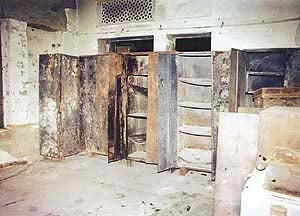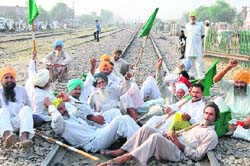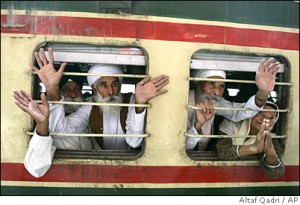
I just received a Community Advisory alert from SALDEF discussing the case of Gurnam Singh Khera who recently visited a community center in North Carolina to make a donation for their Thanksgiving Food Drive. Sounds great right? Except for the fact that Gurnam Singh is a Sardar and I guess it goes against somebody’s tenets to have a person wearing a turban make a donation. I don’t seem to follow.
Upon entering the facility, Mr. Khera was told by a receptionist that “this is the United States” and that he needed to remove his Dastaar. When Mr. Khera attempted to explain the religious significance of the Dastaar, the receptionist refused to speak with him. When the Reverend in charge of the facility was summoned, Mr. Khera offered a handshake, but the Reverend reportedly refused to reciprocate and asked Mr. Khera and his wife to leave the facility, saying: “Go donate to some other place; we do not need your donations unless you remove your turban.”
SALDEF has contacted Reverend Ron Weeks of the Union Mission of Roanoke Rapids, NC asking for the community center to apologize to Mr. Khera and work with SALDEF on efforts to celebrate religious diversity in the cause of helping the less fortunate. Reverend Ron Weeks did take the time to respond. I think I’ll just let you read it yourself,
We are a Christ centered ministry that has been serving our communities “in Jesus name” from our own private facilities since 1951. We have a long standing policy that is clearly displayed on our lobby door that all males are required to remove their head gear. We feed meals everyday and welcome the idea of others doing the same as our communities are certainly in need of more than we are able to do. Being supported totally by donations we don’t turn them away. Couldn’t his donation be used by the local Langar you speak of? I can think of several options; send it by another person, mail or internet…donate to another charity.
Wow. i wonder if this also means that this charity would not serve someone in need who happened to wear a turban? SALDEF is encouraging the community to contact Union Mission of Roanoke Rapids to express your dissapointment in their bizzare donation policy. You can contact Rev Ronald C Weeks at edirector at umrr dot org.
Yay to SALDEF for addressing this issue. Boo to uninformed community center leaders. We’ll do our best to keep you updated on this issue.
A new contest + award is in place for Sikhs. Who will be the Chic Sikh of the Year for 2008?
The sponsor is Sikhchic, the online magazine which promotes Sikhs in the arts (and also invites articles on an array of subjects). The nomination process is completely transparent, which make s it interesting. Anyone can nominate by simply entering a nomination and the reasons for it as a comment. It then gets posted, so you can see all of the nominations here. So far, the illustrious nominees include: Prime Minister Manmohan Singh, the Singh Twins, Fauja Singh, Amandeep Singh Madra, and I.J. Singh.
s it interesting. Anyone can nominate by simply entering a nomination and the reasons for it as a comment. It then gets posted, so you can see all of the nominations here. So far, the illustrious nominees include: Prime Minister Manmohan Singh, the Singh Twins, Fauja Singh, Amandeep Singh Madra, and I.J. Singh.
The award doesn’t have to be awarded to a Sikh. It’s unclear how much of a connection a nominee has to have to the Sikh community- whether they have to commit a Sikh-like deed or act to somehow promote/improve the Sikh community. It also doesn’t have to be to a person- it can be to an institution. There are many organizations that have done some really interesting things in the past few years for the Sikh community, and I’m sure we’ll be seeing some of them nominated.
Awards validate ideals- confirm that they mean something. It ‘s unclear so far what ideals this award will recognize since the parameters for nomination have been left purposefully vague. I guess we’ll know more when an awardee is chosen.
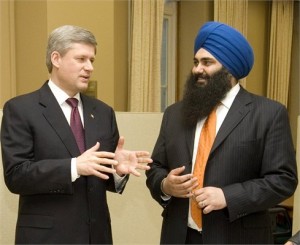 It’s a dark and story night in northern Alberta city of Edmonton. Preparing for a national election that is still months away, the Conservative Party’s riding association in Edmonton-Sherwood is having its nomination meeting. Its not expected to be eventful, as everyone expected local municipal councillor Jacquie Fenske to win by acclamation. On the last day, a young man walks in with his supporters and also declares his intentions to contest the riding on behalf of the Conservative party. He happens to come prepared with more supporters than the surprised Fenske and ends up winning the nomination. A supporter of the exiled Fenske, James Ford contests as an independent but is defeated by the official Conservative candidate as part of an overall minority government win by the Tories.
It’s a dark and story night in northern Alberta city of Edmonton. Preparing for a national election that is still months away, the Conservative Party’s riding association in Edmonton-Sherwood is having its nomination meeting. Its not expected to be eventful, as everyone expected local municipal councillor Jacquie Fenske to win by acclamation. On the last day, a young man walks in with his supporters and also declares his intentions to contest the riding on behalf of the Conservative party. He happens to come prepared with more supporters than the surprised Fenske and ends up winning the nomination. A supporter of the exiled Fenske, James Ford contests as an independent but is defeated by the official Conservative candidate as part of an overall minority government win by the Tories.
You would expect an initial uproar as a young and upcoming catches the old guard off guard, but things should eventually settle down. However, when there’s still protests more than a month after the election, you know there’s more to this story.
So what’s different? A beard and a turban. These articles of the Sikh faith belong to Tim Uppal, a young Sikh activist who has been spent his entire life on the political scene in Edmonton and had previously contested two other elections and lost in a different riding.
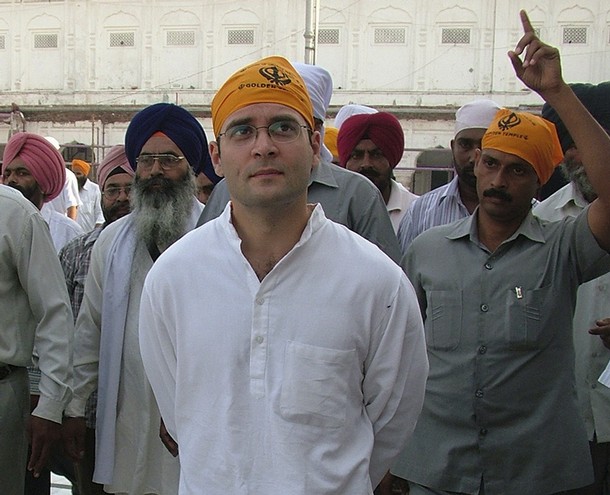
Recently, during a news conference in Amritsar, Rahul Gandhi reportedly condemned the widespread violence which followed his grandmother’s assassination by her bodyguards Satwant Singh and Beant Singh.
The 1984 riots were wrong, and I strongly condemn the carnage…
The comment came in response to a question about Operation Bluestar (SikhiWiki, Sikhipedia, Wikipedia),
What is interesting to me about the reporting is that the media recounting the incident has attached some great significance to the condemnation – as if it means something to the Sikh people that a member of the Gandhi family has openly denounced riots that were obviously wrong and are the cause of so much pain in the Sikh community.
I don’t know that it does. The bottom line is that Rahul Gandhi (son of former Prime Minister Rajiv Gandhi and current Congress Party President Sonia Gandhi) – like his parents, grandmother, great-grandfather, and great-great-grandfather – is a politician and I simply cannot attach much special significance to what he said. As a Sikh I don’t blame Rahul Gandhi for what happened, but I also do not excuse the fact that his father dismissed the riots with comments like “when a big tree falls, the Earth shakes” and that the Indian government has yet to put to justice those who openly instigated and condoned the massacre.
FYI, Rahul went on to explain that neither he nor his family had ill-will towards the Sikh community. Er. Thanks?… I’m sure you sense my sarcasm. So, contrary to what the Indian media may think, Rahul’s comments mean little to me.
Anyhow, I’d like to take this opportunity to promote some media that does mean something to me: The Widow Colony.
For our readers who are not familiar with the film, in short, it is a documentary that presents the stories of a group of Sikh women who lost husbands, sons, and brothers during the anti-Sikh riots of 1984. The film has won numerous accolades and if you have not yet seen it, I highly recommend that you do. And if you are in Northern California – you can see it TOMORROW evening at UC Berkeley.
- What: The Widow Colony
- Where: 2050 VLSB, UC Berkeley, Berkeley, CA 94704
- When: 7:00 pm on Thursday, November 20, 2008
For more info you can email wcberkeley@gmail.com or call 909-802-8892.
[Event poster after the break]
I spent the past weekend surrounded by Sikh Art and Film at the annual Spinning Wheel Film Festival in Hollywood. I usually attend these events with high expectations, hoping to be inspired and moved and there are always one or two films that provide that sustenance. The films were creative, such as The Making of Liverpool – an artistic animation inspired by a painting by The Singh Twins which explores 800 years of Liverpool’s history. The films were educational, such as Cultural Safari – directed by Sandeep Singh and produced by the Kaur Foundation – describing the basics of Sikhi for children of all ages [I have to say that this is one of the most impressive educational films I have come across]. The films were also daunting, such as Warrior Boyz – made by Baljit Sangra which touched upon the root causes of gang violence in the Punjabi community of Vancouver. A favorite of the crowd was Kuldip Powar’s Unravelling – a poetic inter-generational dialogue between the film director and his grandfather about the experience of war all posed in Urdu poetry.
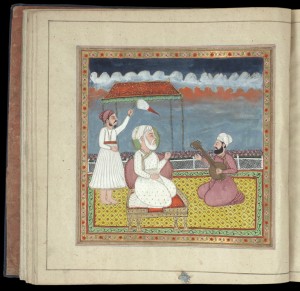 There were many other well-made films such as 35, Kabaddi Cops, and Right to Turban which rightfully deserve mention (and have been discussed or will be discussed in future posts), however what I appreciated most about the weekend was the final day of the festival – which was devoted to lectures on Sikh Art and History. Staff from the Anglo Sikh Heritage Trail and other UK-based organizations presented the attendees with a glimpse into the historical legacy of the Sikhs. One of the lectures was titled the Epic of Saragarhi and discussed the 21 soldiers of the Sikh regiment who defended a remote post against an estimated 10,000 hostile tribesmen. Michael O’Keefe from the British Library discussed Sikh artifacts and paintings and detailed an image of Maharani Jindan Kaur’s Gutka of the Sukhmani Sahib (see picture to the left). The day ended with a panel showcasing Sikhs in Theatre and Music, including traditional music and also hip-hop. Mandeep Sethi and Jagmeet Singh, rappers from LA, ended the festival with amazing performances showcasing their incredible talent of telling stories through hip-hop.
There were many other well-made films such as 35, Kabaddi Cops, and Right to Turban which rightfully deserve mention (and have been discussed or will be discussed in future posts), however what I appreciated most about the weekend was the final day of the festival – which was devoted to lectures on Sikh Art and History. Staff from the Anglo Sikh Heritage Trail and other UK-based organizations presented the attendees with a glimpse into the historical legacy of the Sikhs. One of the lectures was titled the Epic of Saragarhi and discussed the 21 soldiers of the Sikh regiment who defended a remote post against an estimated 10,000 hostile tribesmen. Michael O’Keefe from the British Library discussed Sikh artifacts and paintings and detailed an image of Maharani Jindan Kaur’s Gutka of the Sukhmani Sahib (see picture to the left). The day ended with a panel showcasing Sikhs in Theatre and Music, including traditional music and also hip-hop. Mandeep Sethi and Jagmeet Singh, rappers from LA, ended the festival with amazing performances showcasing their incredible talent of telling stories through hip-hop.
While the film festival brought together a plethora of Sikh art mediums – what it did seem to be missing was the representation of women and the voice of women in these films. The films were predominately made by men and the issues discussed were predominately issues affecting men. This brought several issues to mind – do young Sikh women not feel encouraged to enter the field of Film? Do the current male Sikh filmmakers not feel comfortable telling the story of Sikh women? It seems to be of vital importance that as we develop and promote Sikh films, we ensure that the stories we tell are representative of the entire Sikh panth and pay particular attention to the stories of Sikh women.
I will leave with this quote, mentioned by Harbinder Singh of the Anglo Sikh Heritage Trail, but also very pertinent to the theme of this weekend’s film festival.
Until lions tell their own history,
History will always glorify the hunters.
– African Proverb

“The first step in liquidating a people is to erase its memory. Destroy its books, its culture, its history. Then have somebody write new books, manufacture a new culture, invent a new history. Before long that nation will begin to forget what it is and what it was… The struggle of man against power is the struggle of memory against forgetting.” – Milan Kundera, The Book of Laughter and Forgetting
Sikhs have never been big on preservation. Partly because we’ve spent most of our 500+ year history fighting for very existence, but in recent years its been a greater combination of complacency, incompetence and real external efforts to mess with our past. All of this has contributed to a situation where, it has been said by some experts, that 80% of Sikh history (architecture, artifacts, texts, etc) has been destroyed in the last 100 years.
According to a 1968 publication of SGPC called ‘sada hath likhat sahit,’ the Sikh Reference Library contained 383 volumes that covered 980 different topics. Amongst this repository were several Hukamn?m?s, 2500 hand-written sarups of Guru Granth Sahib, and other rare historical documents. One historical document was written by Bhai Gurdus and bore a hand-written Mul Mantr page by the Ninth Nanak.
The library also consisted of a manuscript dated 1739 Bikram? that was prepared by Guru Gobind Singh Sahib five years after the martyrdom of Guru Teghbahadur Sahib – in this document, the Tenth Nanak added the writings of the Ninth Nanak at Damdama Sahib to the Guru Granth S?hib.
Unfortunately, the Indian Army set the building on fire on June 7, 1984, destroying a majority of these rare documents. In recent years, the Indian Defense Minister has also admitted to the burning or removal of material from the Sikh Reference Library.
As a young kid, the langar hall was my favourite space in our local Gurdwara. Located in the basement of the building, it was a home away from home. My parents helped build the Gurdwara in the 1970s and I spent many weekends helping with the preparation of Sunday morning langar. I occasionally helped with the cooking, often with the serving and always with the running around. The wide open empty space in the hall provided many hours of fun with playing tag and football with a ball made of tied-up ramaals (handkerchiefs). It was a place to hang out with kids that looked like me and who were going through the same things as me.
As I moved through my late-teens and what I affectionately call my “hard-core” phase, I saw the langar hall as a place serving only two specific functions; serving meals and eating meals (on the floor). Idle social conversation wasn’t what you were going to Gurdwara for. You could do that during the famous multi-family dinner parties that all Punjabi parents dragged their kids to. Gurdwaras were for serious matters and all these people sitting around and gossiping were just taking up valuable time space. Thankfully, I lightened up.
Fast forward a decade (or two) and now, I’ve reconciled my past. Growing up, while I was hanging with other kids who called “jooda time-outs”, the adults were also drinking chaa, talking and sharing stories with other adults. Through the universal acts of serving a meal and sharing a meal, the langar hall became a hub for my local Sikh community.
I’ve seen many an animated conversation in a langar hall. I’ve seen people talk with passion about faith, family, politics, business, sports. In fact, aside from the langar hall, our community has few other forums that provide for all walks of life to come together and share their ideas.
That is why I love that the Langar Hall has gone online. In the same spirit of my community Gurdwara, this site brings together ordinary Sikhs to talk about the issues of the day. The only difference here is that you have to supply your own chaa and mutheai (how the heck do you write that in English? Its worse than paranthas).
I’ve been asked to take on the seva of contributing to this great project. I do not have an English degree from a fancy American university like my illustrious colleagues, in fact I probably should have taken up my Grade One teacher’s offer of English as a Second Language classes. Regardless, I will promise to add another voice to the conversation. Not one that is highly educated or representative of all Sikh-Canadians but one of a second generation Sikh-Canadian born and raised in a country he loves as his own.
Let the gup-shup begin!
Coblogged by: Jodha and Mewa Singh
Well it doesn’t seem by the number of comments (0) that this first attempt at a book club garnered much interest, although by the number of hits, it has been extremely popular. Regardless, for us it has been a 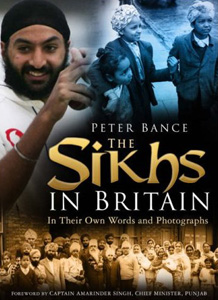 great excuse to read a great book….So we’ll continue. PS: the side picture is related to a soon-to-be-available coffee table photography book.
great excuse to read a great book….So we’ll continue. PS: the side picture is related to a soon-to-be-available coffee table photography book.
———————————————–
The two chapters read this week probably deserve separate blog posts, but still in the interest of time and space, we are going to keep them together.
Chapter 5 deals with “Homeland Politics: Class, Identity, and Party” and Chapter 6 is about “British Multiculturalism and Sikhs.”
The authors begin chapter 5 by noting that:
Associations of immigrants in Britain have generally served two functions: to facilitate the integration of the new arrivals and as conduits of homeland politics, and these functions have further strengthened with the onset of globalization, which has underpinned the rise of nationalism and diaspora movements. (94)
1984 is seen as the ‘critical’ event that intensified Sikh religio-ethnic self-identification with large numbers of Sikhs. The mammoth protest at Hyde Park on June 10, 1984 may still be vividly inscripted upon the memories of many Sikh-Britishers.
Still the associations and groups that were created to manifest this new religio-ethnic self-identification and homeland politics were along the lines of traditional associations. While there was something new in what came out of the community after 1984, there are continuities as well.
Tracing the evolution of various causes within the Sikh community, the authors note moves from the politics of class (IWAs [Indian Workers Association] up to the early 1980s), to the politics of identity (Khalistan 1984-1997), to emphasis on political organization (Sikh Political Party, UK) (94).
Over the past ten years, we’ve seen a resurgence of concern over religious accommodation for Sikh prisoners, witnesses, and the accused, in the American courts.  Four years ago a Sikh inmate starved himself to death. At the time, there were competing stories and speculation over whether this was out of shame, out of fear of being beaten by guards, or for failure to accommodate religious dietary needs.
Four years ago a Sikh inmate starved himself to death. At the time, there were competing stories and speculation over whether this was out of shame, out of fear of being beaten by guards, or for failure to accommodate religious dietary needs.
Since then, at least two recent stories reopen the situation of Sikhs asked to stand at trial or who are incarcerated. In San Jose, a judge has barred a man accused of murder from entering the court room with his turban on, arguing he could hide a noose or other weapon in it:
A San Joaquin County Superior Court judge says a Sikh man facing trial over the murder of his daughter’s former boyfriend will have to appear before jurors without his turban.Judge Charlotte Orcutt says that the long fabric pious men use to wrap their hair could hide a weapon or be used as a noose. [link]
Aside from the abject stupidity of the rationale for disallowing the turban, I was a little floored to see this rationale upheld in the South Bay Area, where there are more than enough Sikhs (including those who have appeared at trial) for the courts to have developed protocols for this, already. The issue extends beyond California, however, to other federal prisons as well:
An American Vietnam War veteran, who converted to Sikhism 20 years ago, has asked President George W. Bush to intervene in protecting the religious rights of a Sikh prisoner in Florida whose hair were cut by prison authorities. [link]
… Tarney said Jagmohan Singh Ahuja’s hair were forcibly cut by officials of the Duval County Jail in Jacksonville, Florida. Ahuja is serving a three year sentence for misdemeanour violations.
The U.S. Supreme Court ruled pretty decisively on the obligation states and the federal government have in allowing for religious practice and accommodation in 2005. What that means in practice, however, hasn’t really translated. Inmates who protested in the 2005 decision were often from “minority” or “non-mainstream” religions (e.g., white supremacists, Wiccans, practitioners of Native American spiritual backgrounds). So then why do Sikhs continue to operate under misunderstandings regarding the inherent harm or potential threat posed by religious practice? The “othering” factor is obvious and easy, but I would argue that their vulnerability is compounded by a lack of language access, lack of representation, and a tenuous relationship between non-incarcerated and incarcerated Sikh populations.
Several farmers created a blockade on Punjab railroad tracks to demand better prices for rice and cotton. Read here for the full story.
This protest was done in the quintessential farmer-way … a picture always speaks a thousand words … beautiful! Hope you all have a relaxing weekend! 🙂
In a recent THL discussion on Prop. 8 we have been addressing the use of Sikh principles in taking a position on homosexual marriage.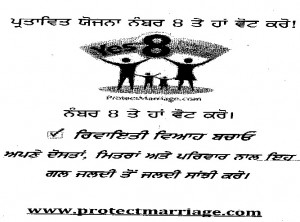 At a recent Nagar Keertan in Yuba City, California there were “Yes on Prop. 8” fliers along with the really interesting T-shirts. Thus, I think religion is an important part of the discussion on Prop. 8 because there is a reason why this state-related material is at religious events. Religion is a moral compass that guides many people’s decisions in all kinds issues. Thus, I don’t condemn those who have used religion as their moral source for voting Yes or No on Prop. 8. However, I do disagree with how Sikh scripture has been misused as “rules” rather than concepts that guide our decisions. I attribute these actions to a general lack of understanding and education around the Guru Granth Sahib Ji in our community. This education is a fundamental issue we as a Quam need to find practical solutions for rather than blame people for not knowing.
At a recent Nagar Keertan in Yuba City, California there were “Yes on Prop. 8” fliers along with the really interesting T-shirts. Thus, I think religion is an important part of the discussion on Prop. 8 because there is a reason why this state-related material is at religious events. Religion is a moral compass that guides many people’s decisions in all kinds issues. Thus, I don’t condemn those who have used religion as their moral source for voting Yes or No on Prop. 8. However, I do disagree with how Sikh scripture has been misused as “rules” rather than concepts that guide our decisions. I attribute these actions to a general lack of understanding and education around the Guru Granth Sahib Ji in our community. This education is a fundamental issue we as a Quam need to find practical solutions for rather than blame people for not knowing.
That said, I believe a fundamental part of Sikhi is love … the morality of love. It’s not the happy happy love or perfect one that excuses all actions, but the one that makes us human enough to see the light of Waheguru in all …. even those we detest. What is this love … I think Khalil Gibran poignantly explains it in his book “The Prophet”:
“For even as love crowns you so shall he crucify you. Even as he is for your growth so is he for your pruning. Even as he ascends to your height and caresses your tenderest branches that quiver in the sun, so shall he descend to your roots and shake them in their clinging to the earth.”
Pakistan-bound Sikh devotees wave to relatives as they depart by a special pilgrimage train in Amritsar, India. Hundreds will journey to the birthplace of the first Sikh guru, Guru Nanak Dev, in Nankana Sahib, to celebrate his birthday.
[Photo by Altaf Qadri]
A movie you might be interested in, Slumdog Millionaire, is being released in major cities today and most other North American cities throughout the next few weeks. The plot might sound corny to the skeptical (it involves some romance), but if it’s as well done as it seems to be from the trailer, it could be one of those poignant, moving films that only come along once every few years (in the genre of Born into Brothels). The trailer gives away a lot, so if you like to be surprised, don’t watch all (or any) of it. (The skeptic in me is hoping it’s not a touristy, voyeuristic ride into areas that most movie-goers will only go to through the movie…)

An interesting theme that came up in the making of the movie is product displacement. Apparently Mercedes and “a well known soft drinks company” objected to their products being shown in a slum and demanded that their logos be removed, which was done digitally, costing tens of thousands of pounds. Yet, the Benz folks were perfectly happy having their logo appear on a gangster’s car when it was parked outside his mansion. So it’s ok to engage in mass (probably violent) crime as long as you’re wealthy. Mercedes will hang with you. But if you want to try to earn an honest living, and just can’t make it out of poverty- sorry, no such luck. [Timesonline]
The car manufacturer and a well-known soft drinks company believed that their brands would be sullied if their products were shown in one of Bombay’s shantytowns. [Timesonline]
Hey, Mercedes and fizzy drink company- you may have missed one of the points of the movie-you know, here’s the human struggle and spirit, from the eyes of someone you didn’t realize you had so much in common with??… Never mind. (I’m trying to not let their stupidity ruin the movie for me.)
More absurdity, synopsis and release dates below the fold.
The elections are over, but even after the last card has been punched and the last absentee ballot counted, the political fervor that they ignited is still alive. While the country took two steps forward on its march towards complete civil rights by electing its first African American president , it took a step back by taking away the rights of particular individuals. California’s Prop. 8 received national attention (no surprise with more than $70 million in campaign spending). The proposition reversed a ruling from the California Supreme Court, which earlier this year declared that banning same-sex marriages was discriminatory. Prop. 8 – which passed albeit by a hair – will for the time being change the state constitution to define marriage as only between a man and a woman.
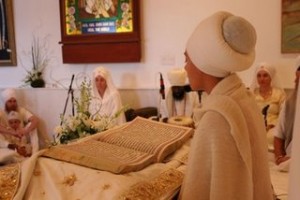 People feel really passionate about this topic. Really really passionate. What interests me the most, however, are the arguments for and against same-sex marriages and particularly what it does or does not say in the Sri Guru Granth Sahib about this topic. People are actually using words from the Sri Guru Granth Sahib to make their point – and I’m not sure that’s legit. In fact, I’ve been following a heated discussion on a certain social networking site where young Sikh individuals have been going back and forth about what voting for or against Prop. 8 means. The most common argument against same-sex marriages is that in the Sri Guru Granth Sahib it states that marriage is the union of two souls, husband and wife, man and woman, male and female. The other side of the argument is that Sikhi advocates equal rights for all and the Sri Guru Granth Sahib does not specifically make any comment on same-sex marriages. However, there seems to be a lot of ambiguity as to what is actually said. One reference states,
People feel really passionate about this topic. Really really passionate. What interests me the most, however, are the arguments for and against same-sex marriages and particularly what it does or does not say in the Sri Guru Granth Sahib about this topic. People are actually using words from the Sri Guru Granth Sahib to make their point – and I’m not sure that’s legit. In fact, I’ve been following a heated discussion on a certain social networking site where young Sikh individuals have been going back and forth about what voting for or against Prop. 8 means. The most common argument against same-sex marriages is that in the Sri Guru Granth Sahib it states that marriage is the union of two souls, husband and wife, man and woman, male and female. The other side of the argument is that Sikhi advocates equal rights for all and the Sri Guru Granth Sahib does not specifically make any comment on same-sex marriages. However, there seems to be a lot of ambiguity as to what is actually said. One reference states,
[The Sri Guru Granth Sahib] is seemingly silent on the subject of homosexuality; however, married life is encouraged time and time again in Guru Granth Sahib Ji. Whenever marriage is mentioned, it is always in reference to a man and a woman. Some Sikhs believe that Guru Granth Sahib Ji is the complete guide to life, and if a marriage between two of the same sexes is not mentioned, it is therefore not right. The counterargument to this is that man and woman are only mentioned in this way to give light to the relationship of the soul and the soul force as being one. This denies gender and sex as an issue. Thus, Sikhism is more concerned with ones attainment of enlightenment rather than habitual desires such as sexuality. True love is attained through the Guru and no man speaks on behalf of the Guru as the Granth is open to interpretation and misrepresentation. [Link]
Unfortunately South East Asia’s coverage in The Langar Hall remains sparse, except for often tragic stories that make the world headlines.
Here we report on something much more pleasant.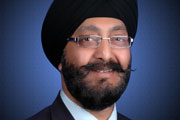
It seems that in New Zealand, we have our first Sikh elected as a member of parliament (MP). Delhi-born businessman, Kanwaljit Singh Bakshi, won his precinct as a member of the conservative National Party, winning the immigrant-dominated Manukau East constituency in suburban Auckland.
Now I am the first to admit that I don’t know much about New Zealand’s politics, nor much about the National Party (other than that the “Nats” seemed poised to form the new government in New Zealand, after nearly a decade of Labour Party rule).
Still for some strange ethnic solidarity purpose (although I have a feeling I would have not voted for Bakshi), I do think his victory is a good thing for New Zealand in general and the Sikh community there in particular.
Coblogged by: Jodha and Mewa Singh
After a suggestion from a fellow langa-(w)riter (thanks Reema!), we are trying a more thematic approach this week instead of summation. Let’s see how it goes: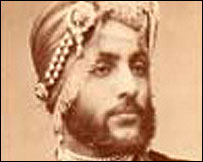
——————————————————-
Chapter 3 and 4 this week had two very different topics. The third chapter begins by looking at the movements and changes in settlement, demography, and social profiles of the Sikh-British, while the fourth chapter concentrates on institution-building within the community at its chief site, the Gurdwara.
Issues of Settlement:
The story of Sikh settlement in Britain begins with Duleep Singh, the son of Sardar Ranjit Singh. After the defeat of the Sarkar-e Khalsa by the forces of the East India Company, Duleep Singh was separated from his mother, forced to renounce all claims and much state property, and later converted to Christianity, only to later reconvert to his ancestral faith towards the end of his life. While Duleep Singh’s story is an epic in and of itself symbolic of Sikh-Anglo relations, his migration to Britain was only to be the beggining of the Sikh presence.
In the spirit of offering profiles of Sikh communities around the world, I wanted to share this article on a small but thriving Sikh community in Argentina:
The Sikhs originally came to Argentina in the early 19th century to work on a British-built railroad. Later, in the 1970s, others came after being barred entry to Canada and the United States, the preferred destinations, along with Britain, for the emigrants.
At the time, Argentina seemed the most promising of South American nations, and so they stayed, eventually concentrating in the north, which reminded them of the scrappy mountains and plains of Punjab.
Today, there are 300 of them, many of whom run supermarkets and other shops.
The article highlights the solo Sikh gurdwara in Argentina and the prevalence of interreligious marriages. The Catholic-Sikh connection parallels, in part, the history of Latino-Punjabi (Catholic-Sikh) marriages in California during the Asian Exclusion Act years. The small community fears, however, that practice will continually erode, especially with the high out-marriage rate:
Mixed marriages with Catholic Argentines are common. Although they are increasingly integrated, the temple is an emblem of their adherence to their roots….
The marriages to non-Sikh Argentines means “keeping one’s religion becomes almost impossible,” he said, adding: “I think the third generation is the one that will lose the most.”
I thought this was an interesting divergence, because other small Sikh communities in other countries continue to thrive and maintain their identity. Perhaps one of the key differences is the religious diversity among immigrants or within the country itself? (although how that would apply to Catholic Italy is an open question).
Barack Hussein Obama’s historic victory as the 44th President of the United States Of America is being celebrated not only in America, but across the world.
He said in his victory speech that:
This victory alone is not the change we seek. It is only the chance for us to make that change. And that cannot happen if we go back to the way things were.
It can’t happen without you, without a new spirit of service, a new spirit of sacrifice.
So let us summon a new spirit of patriotism, of responsibility, where each of us resolves to pitch in and work harder and look after not only ourselves but each other.
Thus, I leave you with a BBC news clip on how the World is reacting to Obama’s win. As people celebrate across the world, they also offer what they believe this “chance” for “change” means for American foreign relations!

 As I searched the Internet for information on the 2008 Diwali celebration at the Golden Temple, I came across this video on YouTube. It shows a beautifully lighted Golden Temple complex, with fireworks going off in the nighttime sky. My joy at watching the visuals soon turned to discomfort in hearing the sounds — the cracking of the fireworks reminded me of gunshots, gunshots that went off in that same area over twenty-four years ago.
As I searched the Internet for information on the 2008 Diwali celebration at the Golden Temple, I came across this video on YouTube. It shows a beautifully lighted Golden Temple complex, with fireworks going off in the nighttime sky. My joy at watching the visuals soon turned to discomfort in hearing the sounds — the cracking of the fireworks reminded me of gunshots, gunshots that went off in that same area over twenty-four years ago.
As I thought about the horror of Operation Blue Star and the subsequent anti-Sikh riots in Delhi, a friend relayed this disturbing and upsetting news: the Indian Army finally admitted last month that Sikh soldiers were among those killed in the anti-Sikh pogrom. Up until last month, the Indian Army reportedly hid the names of the soldiers who were killed in the riots. In fact, the government allegedly “hatched a conspiracy to hush up [the] matter by labeling the soldiers as deserters.”
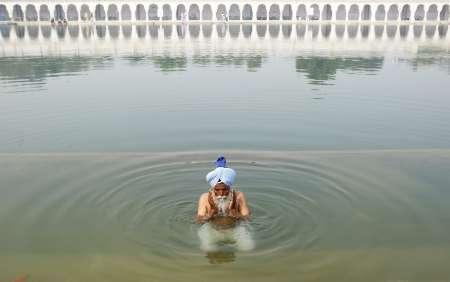
A Sikh devotee offers prayers at a gurudwara in New Delhi November 5, 2008.
REUTERS/Francois Lenoir (INDIA).
 Upon entering the facility, Mr. Khera was told by a receptionist that “this is the United States” and that he needed to remove his Dastaar. When Mr. Khera attempted to explain the religious significance of the Dastaar, the receptionist refused to speak with him. When the Reverend in charge of the facility was summoned, Mr. Khera offered a handshake, but the Reverend reportedly refused to reciprocate and asked Mr. Khera and his wife to leave the facility, saying: “Go donate to some other place; we do not need your donations unless you remove your turban.”
Upon entering the facility, Mr. Khera was told by a receptionist that “this is the United States” and that he needed to remove his Dastaar. When Mr. Khera attempted to explain the religious significance of the Dastaar, the receptionist refused to speak with him. When the Reverend in charge of the facility was summoned, Mr. Khera offered a handshake, but the Reverend reportedly refused to reciprocate and asked Mr. Khera and his wife to leave the facility, saying: “Go donate to some other place; we do not need your donations unless you remove your turban.”